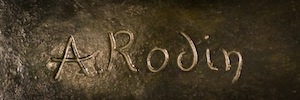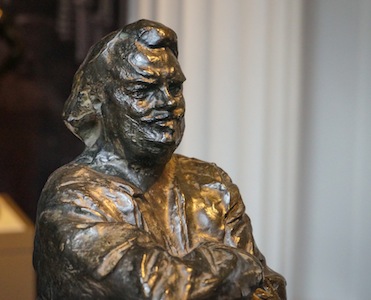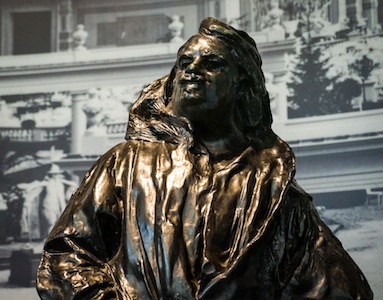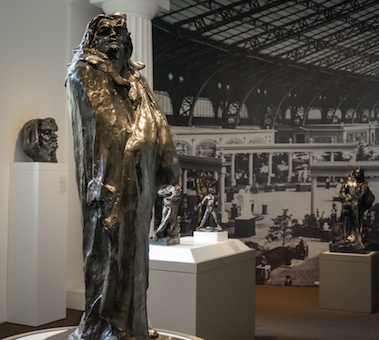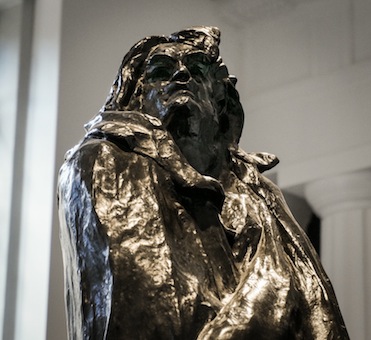Click on any photo to see a larger image.
In 1889, Rodin was commissioned to sculpt famed French novelist Honoré de Balzac, who had died in 1850. Rodin undertook a period of intense research and produced a number of figures. He portrayed Balzac in a frock coat, in the Dominican friar's habit he wore at night and even as a nude, which caused some to recommend Rodin portray the writer "at an age when he was less potbellied, when his neck had not disappeared beneath the fat."
Regarded by some as the first truly modern sculpture, the Monument to Balzac was publicly reviled when first shown in 1897, leading to the cancellation of the commission and a very public argument about the nature of art. A manifesto defending Rodin was signed by Monet, Debussy and future prime minister Georges Clemenceau.
The Cantor collection includes a number of Balzac figures, including the scandalous Monument. Below, Balzac in a Frock Coat seems a confident character. The nude Balzac, also with his arms folded, is in the background.
Below is the head of the nude Balzac -- the "potbellied" author with little care for the judgment of others. The second photograph displays Balzac against the background of the Societé Nationale des Beaux Arts, organized by a group of artists who formed their own movement against traditional, publicly-supported art. Rodin displayed both The Kiss and a plaster study of the Monument to Balzac in 1898 at this exhibition, hoping perhaps that the popularity of the lovers might lead his critics to view the Balzac piece more sympathetically.
In the Monument to Balzac, below, the bravado of the writer has been replaced with the determination of a powerful artistic visionary. After the initial rejection of this work, there were offers from individuals to buy it, but Rodin kept it at his home, where it was famously photographed by Edward Steichen (opens in separate browser window or tab). The work was not cast in bronze and displayed publicly until after the sculptor's death.
Back to Top of Page
